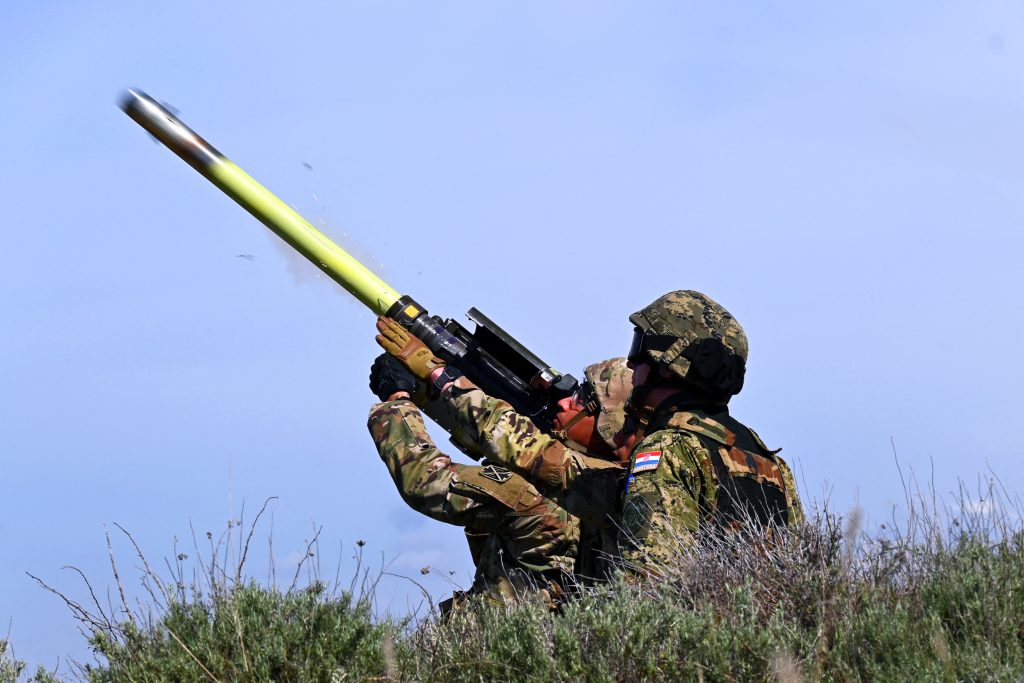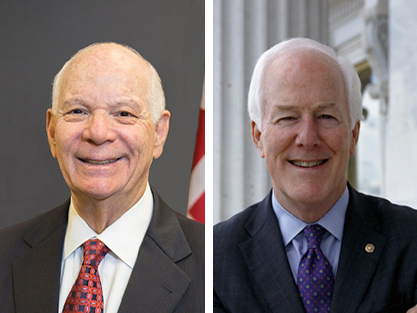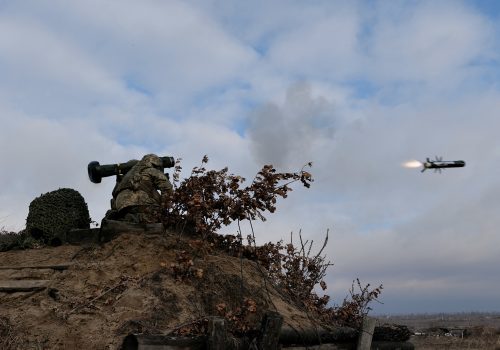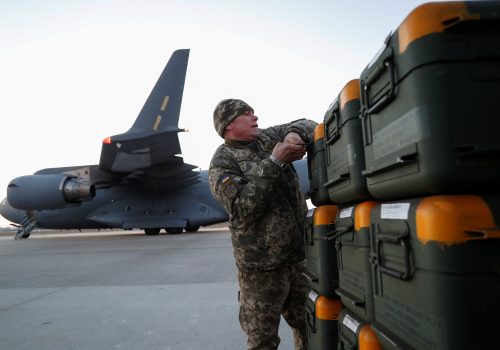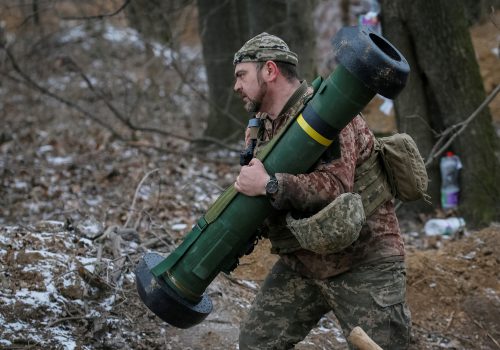Two prominent US senators say that Congress is likely to offer significant support for Ukraine against Russia in response to the Biden administration’s request for $33 billion in new aid—and may even consider arming neighboring nations to fend off future aggression from Vladimir Putin.
Sens. John Cornyn (R-TX) and Ben Cardin (D-MD) spoke at an Atlantic Council Front Page event on Friday one day after a bill they co-sponsored, the Ukraine Democracy Defense Lend-Lease Act, cleared the House on its way to US President Joe Biden’s desk. The Lend-Lease plan evoked World War II efforts to arm Great Britain against Nazi aggression. The two senators detailed a bipartisan strategy to send the message that US support for Ukraine will be as unflinching as the Ukrainians have been in their defense against Russian aggression. Here are some highlights from the conversation.
Maintaining urgency
- Congress overwhelmingly passed Lend-Lease for Ukraine—unanimously in the Senate and 417-10 in the House—and has already appropriated more than $14 billion since the invasion began on February 24 to fund Ukraine’s defense. The two senators spoke of the need to keep up US support. “We need to do more, faster,” Cornyn said. “Putin can continue to claim that this is escalatory. But this is us calling his bluff. Now we’re in the process of providing everything Ukrainians can use, as well as the training they need to use new weapons and heavier weapons systems.”
- Cardin, the chairman of the Commission on Security and Cooperation in Europe, noted that he recently met with Georgian President Salome Zourabichvili. He said that the United States should also provide defense capacities to other countries at risk of Russian aggression: “We have to be concerned about Georgia, about Moldova, and we have to be concerned about the eastern front of NATO.” Cornyn added that “this is now the front line for the defense of democratic states.”
- Cardin and Cornyn both expect Congress will respond favorably to the White House’s $33 billion request on Thursday for additional military and civilian assistance for Ukraine. “I am confident there will be strong bipartisan support,” Cardin said. “We will want to make sure it’s enough. We will want to make sure it’s in the right areas. And we want to make sure that we send a clear message to our allies around the world that they also need to step forward and help the Ukrainian people, because literally their democracies and sovereignties are at stake.”
The next steps
- Cornyn said the United States must make clear that any future Russian aggression will be met with an equally aggressive defense—citing as mistakes the recent US exit from Afghanistan and half-measures in response to Russia’s 2014 invasion of Crimea and eastern Ukraine. “Anything less is going to just encourage Mr. Putin to think, ‘Maybe I’ll take a bite,’” Cornyn said.
- Cardin outlined the current US strategy in four parts, beginning with sanctions against Russia, military assistance, and humanitarian aid for Ukraine and others displaced by the war. The recent legislative actions will help the US send additional defense equipment, with Cardin saying air- and tank-defense systems were the highest priority items. The fourth part will be “helping to accumulate the evidence to pursue war crimes against the perpetrators of these atrocities,” Cardin said.
- However, Cornyn acknowledged the need to tread delicately given Russia’s nuclear stockpile. “One of the most dangerous people in the world is somebody who is in a corner and doesn’t have any way out. So I’m sure that [Ukrainian] President [Volodymyr] Zelenskyy is trying to think of how we can achieve our goals, which is to restore Ukrainian sovereignty, while giving President Putin perhaps some way out of this to save face.”
Concerns on the horizon
- The recently passed lend-lease bill and supplemental funds from Congress will be undercut if American manufacturers can’t produce enough of the defense equipment Ukraine needs. Biden is speaking next week to weapons producers directly including a visit to a Lockheed Martin factory in Troy, Alabama on Tuesday. “We will continue to do everything we can to urge the industrial base in the United States to ramp up its efforts,” Cornyn said.
- Meanwhile, Cornyn emphasized that other nations are watching the US response to Russia closely, saying that these are “not just isolated events”—so ramping up the US arsenal of democracy from Javelin missiles to semiconductors is a response to global trends beyond Eastern Europe, including China’s implicit threat to reunite with Taiwan by force. Cornyn warned, “There’s important and dangerous things happening in Iran and North Korea, and the threat of an invasion of Taiwan would be enormously disruptive economically, and a threat from a security standpoint as well.”
Watch the full event
Nick Fouriezos is an Atlanta-based writer with bylines from every US state and six continents. Follow him on Twitter @nick4iezos.
Further reading
Thu, Apr 28, 2022
FAST THINKING: The US arms Ukraine for the long haul. Is it enough?
Fast Thinking By
Taken together, the $33 billion funding appeal and so-called Lend-Lease program will send a clear message to Russia.
Fri, Mar 11, 2022
Lend-Lease 2022: How the US can back Ukraine against Putin
UkraineAlert By Thomas S. Warrick
With Ukraine still in desperate need of more military aid to counter Vladimir Putin's invasion, it is now time for the United States to revive the Lend-Lease program signed into law eighty-one years ago on March 11, 1941.
Wed, Apr 27, 2022
Russia Crisis Military Assessment: The race to resupply Ukraine
New Atlanticist By
Victory in the Donbas will go to whichever side seizes the advantage in offensive fires and resupply efforts, according to our military fellows.
Image: Handout file photo dated April 8, 2022 of (From left to right) US Army Staff Sgt. Surya Laller, 5th Battalion, 4th Air Defense Artillery Regiment, U.S. Army Capt. Mitchel Hess, 173rd Airborne Brigade and Croatian Army 2nd lt. Jure Brkic, Croatian Air Defense Regiment fire an FIM-92 Stinger as part of exercise Shield 22, in Pula, Croatia. US Army photo by Capt. Robyn Haake via ABACAPRESS.COM/Reuters
